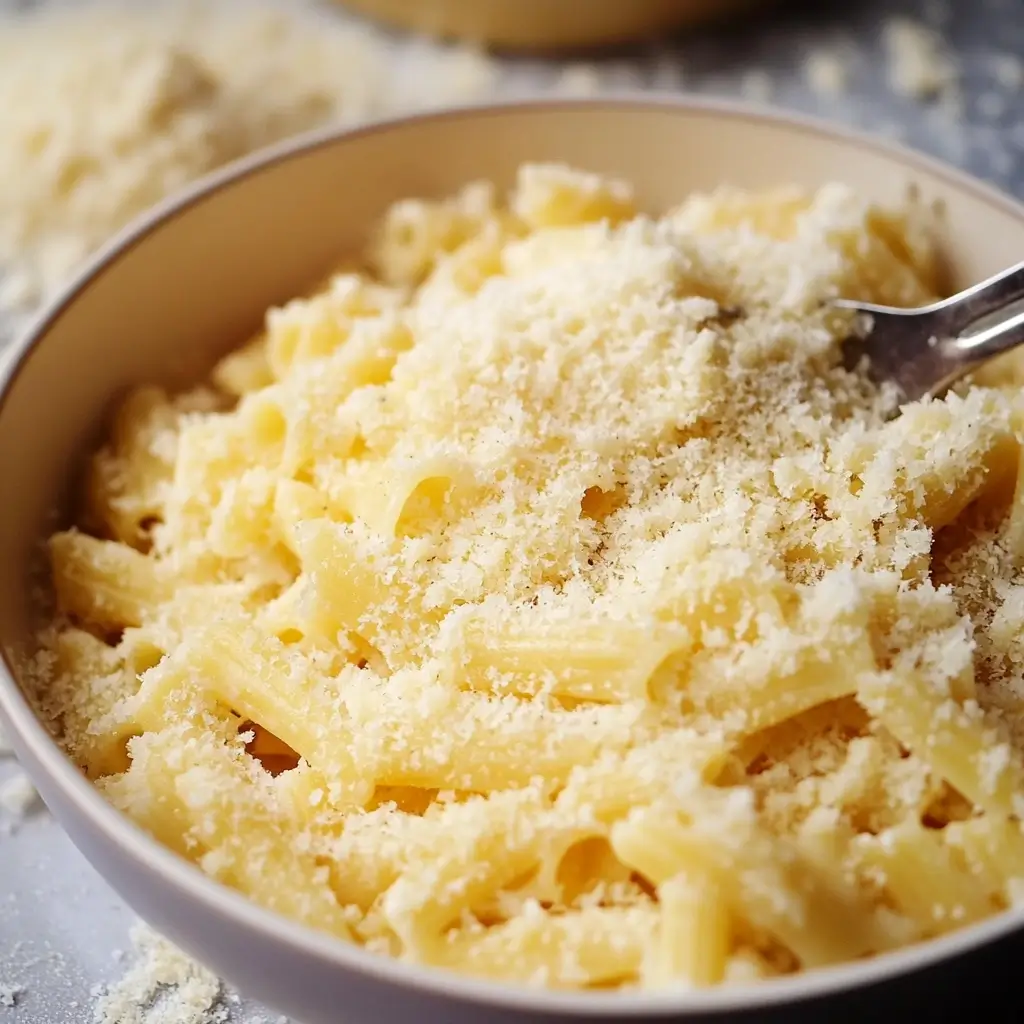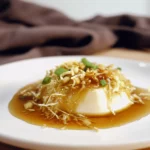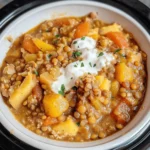There are some dishes that are more than just food; they’re a warm hug, a comforting whisper from childhood, a culinary security blanket. For my family and me, Classic Pastina is precisely that. I remember my Nonna making it for me whenever I felt a bit under the weather, or just needed a little extra TLC. The tiny, star-shaped pasta swimming in a rich, savory broth, often enriched with a touch of butter and Parmesan, was pure magic. Now, as a parent myself, I find myself turning to this incredibly simple yet profoundly satisfying dish for my own children. Whether it’s a chilly evening, a recovery day from a cold, or just a craving for something unpretentiously delicious, this pastina recipe never fails. It’s met with enthusiastic slurps and clean bowls every single time, a testament to its timeless appeal. It’s the kind of recipe that gets passed down, cherished, and continues to bring comfort and joy to new generations.
What Exactly is Pastina?
Before we dive into the beloved recipe, let’s talk about what “pastina” actually means. In Italian, “pastina” translates literally to “little pasta.” It’s not one specific shape, but rather a category encompassing a variety of diminutive pasta shapes. These are often the first pasta introduced to babies in Italy due to their small size and ease of swallowing and digestion.
Common pastina shapes include:
- Stelline: Tiny stars, perhaps the most iconic pastina shape for this type of dish.
- Acini di Pepe: Meaning “peppercorns,” these are tiny pasta balls.
- Orzo: Rice-shaped pasta, though slightly larger than other pastinas, it works beautifully.
- Anellini: Tiny rings.
- Farfalline: Tiny bowties.
- Quadretti/Quadrefiore: Tiny squares.
- Alphabet pasta: A nostalgic favorite for many!
The beauty of pastina lies in its versatility and its quick-cooking nature. It’s traditionally cooked in broth, creating a soupy, porridge-like consistency that is both nourishing and incredibly comforting. While often associated with children or those feeling unwell (earning it the nickname “Italian Penicillin”), its appeal is universal. It’s a staple in Italian and Italian-American households, a simple, humble dish that speaks volumes.
Why You’ll Fall in Love with This Classic Pastina Recipe
There are countless reasons why this classic pastina recipe deserves a permanent spot in your culinary repertoire. Beyond its nostalgic charm, it boasts a range of practical benefits:
- Unbelievably Quick and Easy: From pantry to table in under 15 minutes? Yes, please! This recipe is perfect for busy weeknights, lazy weekends, or when you need a satisfying meal without a lot of fuss.
- Ultimate Comfort Food: There’s something inherently soothing about a warm bowl of pastina. The soft texture, the savory broth, and the gentle flavors combine to create a dish that feels like a warm embrace.
- Kid-Friendly Favorite: The small pasta shapes and mild flavors make it a hit with even the pickiest eaters. It’s a fantastic way to introduce children to pasta and brothy soups.
- Budget-Friendly: Requiring only a handful of staple ingredients, pastina is an economical choice that doesn’t skimp on flavor or satisfaction.
- Highly Customizable: While this recipe provides a classic base, pastina is a blank canvas. You can easily adapt it with different broths, cheeses, vegetables, or even a protein boost.
- Nourishing and Gentle: Cooked in broth, pastina is hydrating and easy to digest, making it an excellent choice when you’re feeling under the weather or need something light yet fulfilling.
- A Taste of Tradition: This recipe connects you to a long-standing Italian culinary tradition of simple, wholesome food made with love.
Whether you grew up with it or are discovering it for the first time, this classic pastina recipe is sure to become a cherished favorite.
Ingredients for Classic Pastina
This recipe focuses on the traditional, simple preparation. The quality of your ingredients, especially the broth and cheese, will significantly impact the final flavor.
- Pastina: 1 cup (approx. 200g) of your preferred small pasta shape (e.g., stelline, acini di pepe, orzo)
- Broth: 4 cups (approx. 950ml) high-quality chicken broth (preferred for classic flavor) or vegetable broth (for a vegetarian option). Low sodium is recommended so you can control the saltiness.
- Butter: 2 tablespoons unsalted butter (can be adjusted to taste)
- Parmesan Cheese: 1/4 to 1/2 cup freshly grated Parmigiano-Reggiano cheese, plus more for serving. Avoid pre-grated if possible, as freshly grated melts better and has superior flavor.
- Egg (Optional, for extra richness): 1 large egg, lightly beaten. This creates a “stracciatella” effect.
- Salt: To taste (be mindful if your broth is already salted)
- Freshly Ground Black Pepper: To taste
- Fresh Parsley (Optional Garnish): 1 tablespoon, finely chopped
A Note on Broth:
While store-bought broth is convenient, if you ever have homemade chicken broth on hand, this is the perfect recipe to let it shine. The depth of flavor from homemade broth elevates this simple dish to another level. If using store-bought, opt for a good quality, low-sodium version. You can always add more salt, but you can’t take it away.
A Note on Cheese:
Parmigiano-Reggiano is the king here for its nutty, salty complexity. Pecorino Romano can also be used for a sharper, tangier flavor, or a blend of both. The key is to use real, freshly grated cheese for the best melt and taste.
Equipment Needed
One of the beauties of this recipe is its simplicity, extending to the equipment required:
- Medium Saucepan or Pot: A 2-3 quart saucepan is ideal.
- Measuring Cups and Spoons: For accurate ingredient measurement.
- Wooden Spoon or Silicone Spatula: For stirring.
- Whisk (Optional): If you’re adding the egg, a whisk is helpful for beating it and incorporating it smoothly.
- Cheese Grater: A microplane or fine grater for the Parmesan cheese.
- Ladle: For serving.
Step-by-Step Instructions for Classic Pastina
This recipe is incredibly straightforward. Follow these steps for perfect pastina every time:
- Prepare Your Ingredients:
- Measure out your pastina, broth, butter, and Parmesan cheese.
- If using, lightly beat the egg in a small bowl and set aside.
- If garnishing with parsley, chop it finely.
- Heat the Broth:
- Pour the chicken or vegetable broth into your medium saucepan.
- Bring the broth to a rolling boil over medium-high heat. Taste the broth at this point; if it’s unsalted or very low sodium, you might want to add a pinch of salt now. Remember, the pasta will absorb the broth, and the Parmesan cheese will also add saltiness later.
- Cook the Pastina:
- Once the broth is boiling, add the 1 cup of pastina.
- Stir immediately to prevent the pasta from clumping at the bottom of the pot.
- Reduce the heat to medium-low to maintain a gentle simmer. You don’t want a vigorous boil, as this can make the pastina mushy or cause the broth to evaporate too quickly.
- Cook the pastina according to the package directions, usually for about 5-8 minutes, or until it is al dente (tender but still with a slight bite). Pastina cooks quickly, so keep an eye on it. Stir occasionally to prevent sticking.
- Enrich the Pastina:
- Once the pastina is cooked to your liking, reduce the heat to low or turn it off completely. The residual heat will be enough for the next steps.
- Add the 2 tablespoons of unsalted butter and stir until it has completely melted and emulsified into the broth, making it look slightly creamy.
- Gradually stir in the 1/4 to 1/2 cup of freshly grated Parmesan cheese until it melts smoothly into the pastina. The mixture will thicken slightly.
- Add the Egg (Optional “Stracciatella” Style):
- If you’re using the egg for extra richness and a stracciatella-like consistency, this is the moment. There are two main methods:
- Tempering Method (Safest for smooth incorporation): Slowly drizzle a ladleful of the hot pastina broth into the beaten egg, whisking constantly. This gently warms the egg and prevents it from scrambling. Then, pour the tempered egg mixture back into the pot of pastina, stirring continuously until it’s well combined and the soup thickens slightly.
- Direct Method (Quicker, requires fast stirring): With the pot off the heat or on very low heat, slowly drizzle the beaten egg directly into the hot pastina while stirring vigorously and constantly. The heat from the pastina will cook the egg, creating silky strands. Do not stop stirring until the egg is fully incorporated.
- If you prefer your pastina without egg, simply skip this step. It will still be delicious!
- If you’re using the egg for extra richness and a stracciatella-like consistency, this is the moment. There are two main methods:
- Season and Serve:
- Taste the pastina and season with salt (if needed) and freshly ground black pepper to your preference. Remember that Parmesan is salty, so taste before adding more salt.
- Ladle the hot pastina into bowls.
- Garnish with a sprinkle of extra Parmesan cheese and freshly chopped parsley, if desired. Serve immediately while it’s warm and comforting.
Nutrition Facts
- Servings: This recipe yields approximately 2-3 hearty servings as a main course, or 4 smaller servings as a side or light meal.
- Calories per Serving (Approximate):
- Without egg: Approximately 350-450 calories per serving (if 2 servings).
- With egg: Approximately 400-500 calories per serving (if 2 servings).
Please note: These are estimates. Actual nutritional values will vary based on the specific brands of ingredients used (especially broth and cheese), the exact type of pastina, and precise serving sizes. The addition of butter, cheese, and egg significantly contributes to the calorie and fat content, but also to the richness and traditional flavor profile. For a lighter version, you can reduce the amount of butter and cheese.
Preparation Time
One of the best things about classic pastina is how quickly it comes together:
- Preparation Time: 5 minutes (gathering ingredients, grating cheese, beating egg if using)
- Cook Time: 8-10 minutes
- Total Time: Approximately 15 minutes
This makes it an ideal recipe for those moments when you need something satisfying and nourishing without spending a lot of time in the kitchen.
How to Serve Classic Pastina
Pastina is wonderfully versatile in how it can be enjoyed. Here are some serving suggestions:
- Simply in a Bowl:
- The most classic way: ladled hot into a comforting bowl, perhaps with an extra grating of Parmesan cheese on top and a sprinkle of fresh parsley or black pepper.
- A drizzle of good quality extra virgin olive oil right before serving can add a lovely fruity note and richness.
- As a Light Meal:
- Perfect on its own for a light lunch or dinner, especially when you’re craving something easy on the stomach.
- Serve with a side of crusty bread for dipping into the flavorful broth.
- For Those Feeling Unwell:
- Its gentle nature makes it “Italian Penicillin.” Serve warm to soothe a sore throat or comfort an upset stomach. Keep it simple without too many rich additions if serving for this purpose.
- As a Side Dish:
- Smaller portions can accompany a main course, like grilled chicken or a simple fish dish.
- Enhanced with Toppings/Mix-ins (see Variations below):
- Consider a tiny dollop of ricotta for extra creaminess.
- A few drops of high-quality balsamic glaze for a sweet and tangy counterpoint (use sparingly).
- For Children:
- Allow it to cool slightly before serving to little ones. The small shapes are perfect for them. You can adjust the consistency by adding a little more broth if they prefer it soupier.
No matter how you choose to serve it, pastina is best enjoyed immediately while it’s warm and the pasta has that perfect tender texture.
Additional Tips for Perfect Pastina Every Time
While this recipe is simple, a few extra tips can help you master it and customize it to your liking:
- Don’t Overcook the Pastina: This is crucial. Pastina cooks very quickly. Overcooking will result in mushy pasta. Aim for al dente, as it will continue to absorb liquid and soften slightly as it sits, even for a few minutes before serving.
- Quality Broth is Key: The broth forms the flavor base of this dish. Use the best quality chicken or vegetable broth you can find or make. Homemade is always a fantastic option if you have it. Low-sodium allows you to control the final seasoning.
- Freshly Grate Your Cheese: Pre-grated Parmesan often contains anti-caking agents that can prevent it from melting smoothly and can dull its flavor. Grating your own Parmigiano-Reggiano (or Pecorino Romano) makes a significant difference in texture and taste.
- Stir, Stir, Stir (Especially at the Beginning): When you first add the pastina to the boiling broth, stir it well to prevent it from sticking together or to the bottom of the pot. Occasional stirring throughout the cooking process is also recommended.
- Adjust Consistency as Desired: Pastina will continue to absorb broth as it sits.
- If you prefer a soupier pastina, you can add a little more hot broth towards the end of cooking or when reheating.
- If you prefer a thicker, more porridge-like consistency, use slightly less broth initially or let it simmer a minute or two longer (being careful not to overcook the pasta itself). Some people even cook it until almost all the liquid is absorbed.
Delicious Variations and Add-Ins
The classic pastina is wonderful on its own, but it also serves as an excellent base for various additions. Here are some ideas to inspire you:
- Vegetable Boost:
- Spinach or Kale: Stir in a handful of fresh baby spinach or chopped kale during the last minute or two of cooking until wilted.
- Peas: Add frozen peas along with the pastina; they cook quickly.
- Carrots and Celery: Sauté finely diced carrots and celery in a little olive oil or butter in the pot before adding the broth for an aromatic base (mirepoix). This adds a classic soup flavor.
- Zucchini: Add finely diced zucchini in the last few minutes of cooking.
- Protein Power:
- Shredded Cooked Chicken: Stir in some leftover shredded rotisserie or cooked chicken for a more substantial meal.
- Tiny Meatballs: Add pre-cooked mini meatballs (polpettine) to the broth along with the pastina.
- White Beans: A spoonful of cannellini beans can add protein and fiber.
- Flavor Enhancements:
- Garlic: Sauté a minced garlic clove in butter or olive oil for a minute before adding the broth.
- Lemon: A squeeze of fresh lemon juice and a bit of lemon zest stirred in at the end can brighten the flavors significantly.
- Nutmeg: A tiny pinch of freshly grated nutmeg is a traditional addition that complements the cheesy, buttery flavors beautifully, especially if you’re including the egg.
- Herbs: Besides parsley, try fresh thyme, chives, or a tiny bit of fresh sage.
- Cheesy Twists:
- Pecorino Romano: Use instead of or in combination with Parmesan for a sharper, saltier kick.
- Fontina or Mozzarella: A small amount of shredded fontina or fresh mozzarella can be stirred in at the end for extra gooeyness (use sparingly to maintain the pastina character).
- Making it Richer or Lighter:
- Olive Oil instead of Butter: For a different flavor profile or if you prefer to avoid butter, a good quality extra virgin olive oil can be used.
- Less Cheese/Butter: Simply reduce the amounts to your preference for a lighter version.
- Milk or Cream: Some variations include a splash of milk or cream at the end for an even creamier texture, though this moves away from the most traditional, brothy style.
Experiment with these additions to find your personal favorite way to enjoy pastina! Remember to adjust seasonings as needed when adding new ingredients.
Storing and Reheating Leftover Pastina
Pastina is best enjoyed fresh, as the pasta will continue to absorb liquid and can become quite thick upon sitting. However, if you do have leftovers:
- Storing:
- Allow the pastina to cool completely.
- Transfer it to an airtight container.
- Store in the refrigerator for up to 2-3 days.
- Reheating:
- Stovetop (Recommended): Place the leftover pastina in a saucepan. It will likely be very thick. Add a splash of broth (chicken, vegetable, or even water) to loosen it up. Gently heat over medium-low heat, stirring frequently, until warmed through. Add more liquid as needed to reach your desired consistency. You may also want to add a little more butter or Parmesan to refresh the flavors.
- Microwave: Place the pastina in a microwave-safe bowl. Add a splash of broth or water. Cover and microwave in 30-second to 1-minute intervals, stirring in between, until heated through. Again, you might need to adjust consistency and seasonings.
Be aware that the texture of reheated pastina might not be exactly the same as when freshly made, but it will still be enjoyable.
Frequently Asked Questions (FAQ) About Classic Pastina
Q1: What is the best type of pastina to use for this recipe?
A: Stelline (little stars) are a classic and popular choice because they hold up well and have a charming appearance. Acini di pepe (peppercorns) and orzo (rice-shaped) are also excellent options. Ultimately, any very small pasta shape will work. Choose your favorite or what’s available.
Q2: Can I make this pastina recipe vegan or dairy-free?
A: Yes, absolutely!
- For Vegan: Use a high-quality vegetable broth. Omit the egg. Replace the butter with a good quality olive oil or a vegan butter alternative. For the cheesy flavor, you can stir in a tablespoon or two of nutritional yeast at the end, or use a store-bought vegan Parmesan-style topping.
- For Dairy-Free: Use vegetable broth or ensure your chicken broth is dairy-free. Omit the egg (or use if eggs are not an issue for your dairy-free needs). Replace butter with olive oil or a dairy-free butter. Use nutritional yeast or a dairy-free Parmesan alternative for the cheese.
Q3: Can I prepare pastina ahead of time?
A: Pastina is best served immediately after cooking because the pasta continues to absorb liquid and can become overly thick or mushy if made too far in advance. If you need to save time, you can have your ingredients prepped (cheese grated, broth measured), but cook the pastina just before you plan to serve it. It only takes about 10-15 minutes from start to finish.
Q4: My pastina is too thick or too thin. How can I fix it?
A: This is an easy fix!
- Too Thick: If your pastina has become too thick (which often happens as it sits), simply stir in a little more warm broth or even hot water until it reaches your desired consistency.
- Too Thin: If it’s soupier than you’d like, you can let it simmer for an extra minute or two (be careful not to overcook the pasta). Alternatively, stirring in a bit more grated Parmesan cheese will also help to thicken it. Keep in mind it will naturally thicken as it cools slightly.
Q5: Is pastina only for children or when you’re sick?
A: Not at all! While it’s famously wonderful for kids and a go-to comfort food when someone is feeling unwell (earning it the nickname “Italian Penicillin”), pastina is a beloved dish for all ages in Italian and Italian-American culture. It’s a quick, simple, and satisfying meal that can be enjoyed by anyone, anytime they crave something warm, comforting, and delicious. Its versatility allows it to be dressed up or down to suit any palate.

Classic Pastina Recipe
Ingredients
- Pastina: 1 cup (approx. 200g) of your preferred small pasta shape (e.g., stelline, acini di pepe, orzo)
- Broth: 4 cups (approx. 950ml) high-quality chicken broth (preferred for classic flavor) or vegetable broth (for a vegetarian option). Low sodium is recommended so you can control the saltiness.
- Butter: 2 tablespoons unsalted butter (can be adjusted to taste)
- Parmesan Cheese: 1/4 to 1/2 cup freshly grated Parmigiano-Reggiano cheese, plus more for serving. Avoid pre-grated if possible, as freshly grated melts better and has superior flavor.
- Egg (Optional, for extra richness): 1 large egg, lightly beaten. This creates a “stracciatella” effect.
- Salt: To taste (be mindful if your broth is already salted)
- Freshly Ground Black Pepper: To taste
- Fresh Parsley (Optional Garnish): 1 tablespoon, finely chopped
Instructions
- Prepare Your Ingredients:
- Measure out your pastina, broth, butter, and Parmesan cheese.
- If using, lightly beat the egg in a small bowl and set aside.
- If garnishing with parsley, chop it finely.
- Heat the Broth:
- Pour the chicken or vegetable broth into your medium saucepan.
- Bring the broth to a rolling boil over medium-high heat. Taste the broth at this point; if it’s unsalted or very low sodium, you might want to add a pinch of salt now. Remember, the pasta will absorb the broth, and the Parmesan cheese will also add saltiness later.
- Cook the Pastina:
- Once the broth is boiling, add the 1 cup of pastina.
- Stir immediately to prevent the pasta from clumping at the bottom of the pot.
- Reduce the heat to medium-low to maintain a gentle simmer. You don’t want a vigorous boil, as this can make the pastina mushy or cause the broth to evaporate too quickly.
- Cook the pastina according to the package directions, usually for about 5-8 minutes, or until it is al dente (tender but still with a slight bite). Pastina cooks quickly, so keep an eye on it. Stir occasionally to prevent sticking.
- Enrich the Pastina:
- Once the pastina is cooked to your liking, reduce the heat to low or turn it off completely. The residual heat will be enough for the next steps.
- Add the 2 tablespoons of unsalted butter and stir until it has completely melted and emulsified into the broth, making it look slightly creamy.
- Gradually stir in the 1/4 to 1/2 cup of freshly grated Parmesan cheese until it melts smoothly into the pastina. The mixture will thicken slightly.
- Add the Egg (Optional “Stracciatella” Style):
- If you’re using the egg for extra richness and a stracciatella-like consistency, this is the moment. There are two main methods:
- Tempering Method (Safest for smooth incorporation): Slowly drizzle a ladleful of the hot pastina broth into the beaten egg, whisking constantly. This gently warms the egg and prevents it from scrambling. Then, pour the tempered egg mixture back into the pot of pastina, stirring continuously until it’s well combined and the soup thickens slightly.
- Direct Method (Quicker, requires fast stirring): With the pot off the heat or on very low heat, slowly drizzle the beaten egg directly into the hot pastina while stirring vigorously and constantly. The heat from the pastina will cook the egg, creating silky strands. Do not stop stirring until the egg is fully incorporated.
- If you prefer your pastina without egg, simply skip this step. It will still be delicious!
- If you’re using the egg for extra richness and a stracciatella-like consistency, this is the moment. There are two main methods:
- Season and Serve:
- Taste the pastina and season with salt (if needed) and freshly ground black pepper to your preference. Remember that Parmesan is salty, so taste before adding more salt.
- Ladle the hot pastina into bowls.
- Garnish with a sprinkle of extra Parmesan cheese and freshly chopped parsley, if desired. Serve immediately while it’s warm and comforting.
Nutrition
- Serving Size: One Normal Portion
- Calories: 350-450





